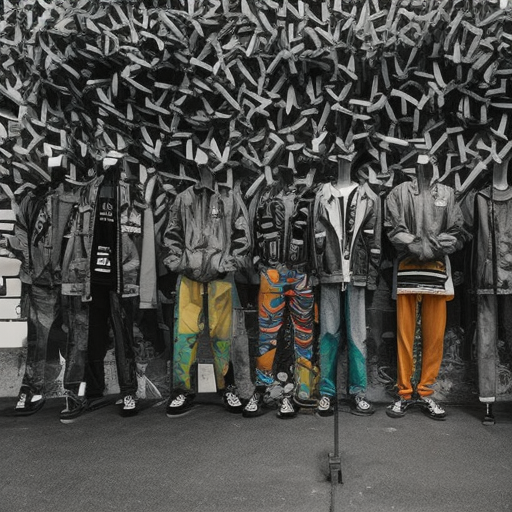Summary: Streetwear is a style of clothing that originated in urban culture and has gained popularity worldwide. It is characterized by its casual and comfortable aesthetic, often drawing inspiration from skateboarding, hip-hop, and youth subcultures. Streetwear has become a significant part of mainstream fashion, with brands like Supreme, Off-White, and BAPE leading the industry. The rise of social media and collaborations with high-end fashion houses have further propelled streetwear into the spotlight.
Origins and Influences
Streetwear emerged in the 1980s and 1990s from the streets of cities like New York, Los Angeles, and Tokyo. It was heavily influenced by the skateboarding and surf cultures, as well as the rise of hip-hop music. Brands like Stüssy, Supreme, and A Bathing Ape (BAPE) were among the pioneers of the streetwear movement, creating clothing that resonated with the youth and reflected their rebellious spirit.
Key Elements and Aesthetic
Streetwear is characterized by its casual and comfortable style, often incorporating elements from sports and workwear. Key pieces include graphic t-shirts, hoodies, sweatpants, sneakers, and accessories like caps and backpacks. The aesthetic is often bold and eye-catching, with vibrant colors, oversized logos, and unique patterns. Streetwear also embraces the concept of limited editions and exclusivity, with many brands releasing limited quantities of their products.
Streetwear Brands
Several streetwear brands have become iconic within the industry. Supreme, founded in 1994, is known for its collaborations with high-end fashion houses and its limited-edition drops that create a frenzy among fans. Off-White, founded by Virgil Abloh, combines streetwear with high fashion, incorporating industrial design elements and typography into its collections. BAPE, with its distinctive camouflage patterns and ape logo, has a loyal following worldwide. Other notable brands include Palace, Kith, and Fear of God.
Impact on Mainstream Fashion
Streetwear has had a significant impact on mainstream fashion, blurring the lines between luxury and street style. High-end fashion houses like Louis Vuitton, Gucci, and Balenciaga have embraced streetwear, collaborating with streetwear brands and incorporating streetwear elements into their collections. This fusion of high fashion and streetwear has attracted a new generation of consumers and challenged traditional notions of luxury.
Social Media and Streetwear
The rise of social media has played a crucial role in the popularity of streetwear. Platforms like Instagram have allowed streetwear enthusiasts to showcase their style and connect with like-minded individuals. Streetwear brands have also utilized social media to build hype around their releases, often collaborating with influencers and celebrities to reach a wider audience. The accessibility and visibility provided by social media have contributed to the global reach of streetwear.
The Future of Streetwear
As streetwear continues to evolve, collaborations and limited-edition drops remain a key aspect of the industry. The influence of streetwear on mainstream fashion shows no signs of slowing down, with luxury brands continuing to embrace the aesthetic. However, there is also a growing movement towards sustainability and ethical production within the streetwear community, with brands like Patagonia and Noah leading the way. The future of streetwear lies in finding a balance between creativity, exclusivity, and responsible practices.
In conclusion, streetwear has become a dominant force in the fashion industry, originating from urban culture and gaining global popularity. Its casual and comfortable aesthetic, influenced by skateboarding, hip-hop, and youth subcultures, has resonated with a diverse audience. Streetwear brands like Supreme, Off-White, and BAPE have become iconic, blurring the lines between luxury and street style. The rise of social media has further propelled streetwear into the mainstream, allowing enthusiasts to showcase their style and brands to build hype around their releases. As streetwear continues to evolve, collaborations, limited editions, and sustainability will shape its future.












